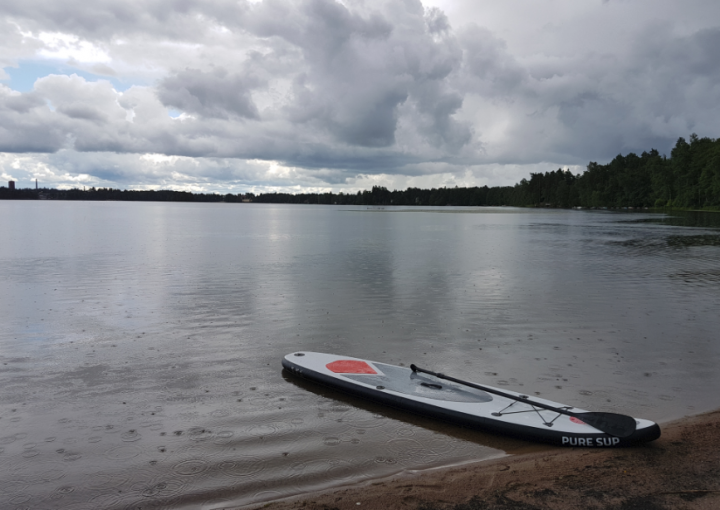Simple and improved diagnostics tools to detect cyanotoxin in water
In the Department of Life Technologies (Biotechnology), we have developed several simple and sensitive methods (1) to detect the widely spread cyanobacterial microcystin and nodularin from water.
Cyanotoxins are various toxins produced by the toxic cyanobacteria (commonly known as blue-green algae). Some toxins can affect the liver cells (liver-toxin), some can effect the nerve cells (neurotoxin) and some can affect the cell function (cytotoxin). Microcystins and nodularins are the most common liver-toxin found all over the world. Microcystins are widely found in the fresh water (lakes, rivers) and nodularins are found in the coastal brackish water (eg Baltic Sea) bodies.
In our Biotechnology unit, we have developed large synthetic antibody libraries, from which it is possible to isolate antibodies against all kinds of molecules including small or challenging target such as cyanotoxin, without the need of any animal sacrifice. Using the 2018 Nobel Prize winning “phage display technology” from our antibody library, I successfully isolated antibodies which enabled the detection of the microcystin/nodularin below WHO guideline value of 1 µg/L (2).
The developed methods include a simple assay that can be performed near the water sampling site and the results can be visible with naked eye without any instrument. For more sensitive quantitative results, other methods can be used in the laboratories having good or poor instrumentation facilities.
Furthermore, the research generated commercial prospects and a US patent was granted for the invented antibodies. Through UTU, VTT and Salofa collaboration, a rapid cyanotoxin test kit was developed. This quick “Blue Green test” which detects cyanobacterial microcystins and nodularins within 10 min is marketed by Salofa (3) and is currently available in the market.
The developed methods are currently applied to detect cyanotoxin from the neighboring Littoistenjärvi and Pyhajärvi lakes. We have been monitoring Littoistenjärvi water since 2009 and the monitoring continues after the lake’s chemical clean up treatment in 2017. During 2020, I monitored the Littoistenjärvi (4) water for cyanotoxin with the support of Turun Yliopistosäätiö funding.
The existing most analytical methods of cyanotoxin are relatively time consuming, very expensive or requires expertise. Fast, reliable and cost effective toxin detection methods are in demand. The use of antibodies is promising alternative and antibody based assays are simple, easy to perform and require less sample processing. However, all currently available antibody based assays use single antibody and require multiple strictly maintained steps and generates inversely proportional signal.
Alternatively, using two antibodies, our developed assays have less steps and are comparatively simple, fast and easy-to-perform. Generated signal is directly proportional to the toxin amount in the sample.
In near future, we plan to develop similar improved, simple-to-use methods for cyanobacterial neurotoxins or other environmental contaminants.
Sultana Akter
References:
(1) https://www.utu.fi/fi/ihmiset/sultana-akter
(2) https://apps.who.int/iris/handle/10665/338066
